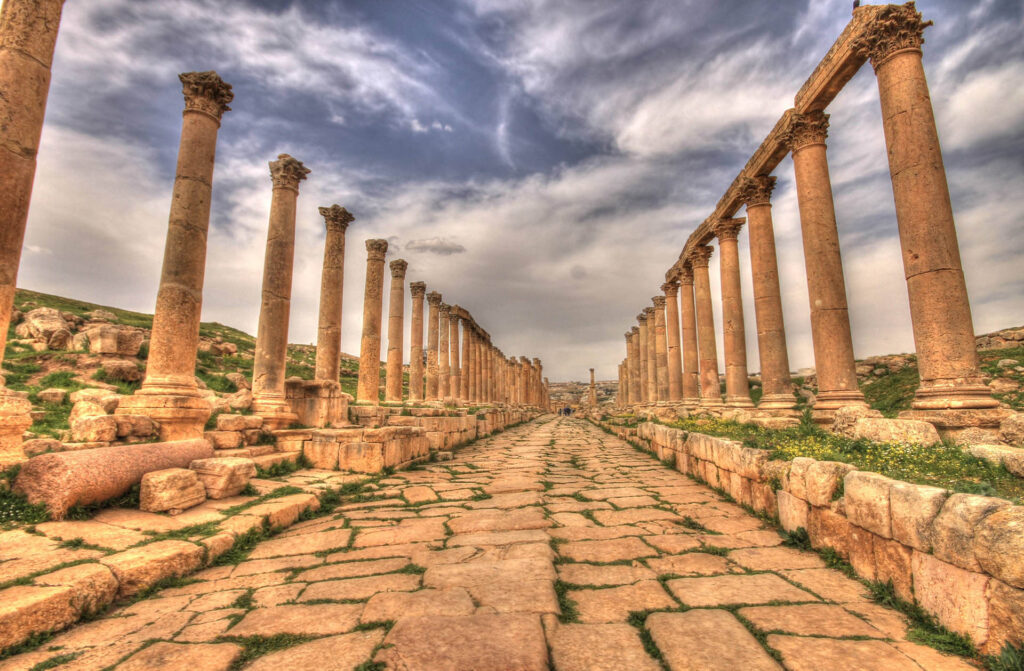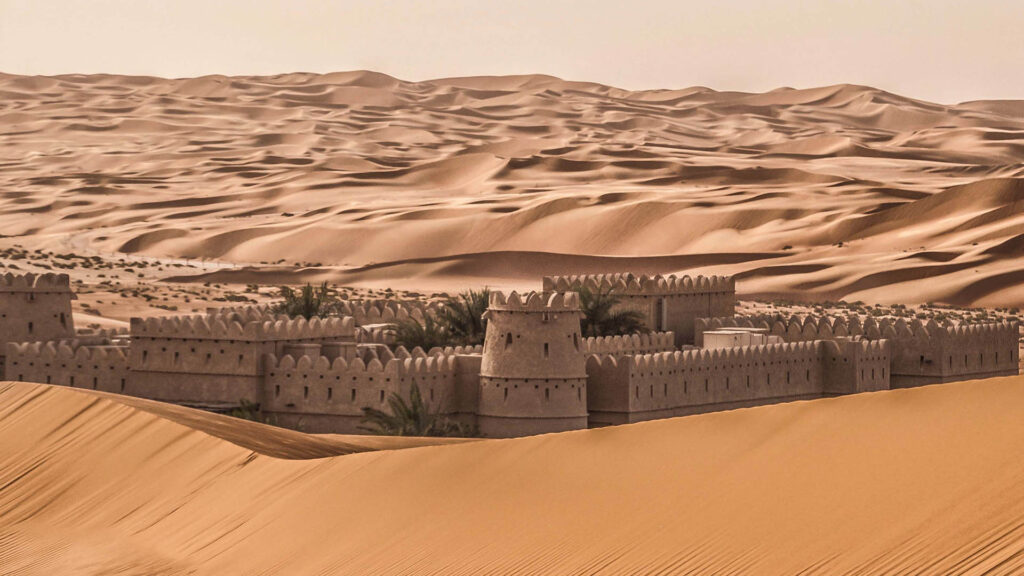Introducing The Colossi of Memnon
Amidst the vast and arid landscape of Luxor’s West Bank, two colossal stone statues stand resolute, their imposing presence a testament to the architectural and artistic brilliance of ancient Egyptian civilization. The Colossi of Memnon, often referred to as the “Singing Statues,” have captivated travelers, historians, and archaeologists for centuries with their monumental scale, intricate craftsmanship, and the enduring mysteries that surround their creation and purpose.
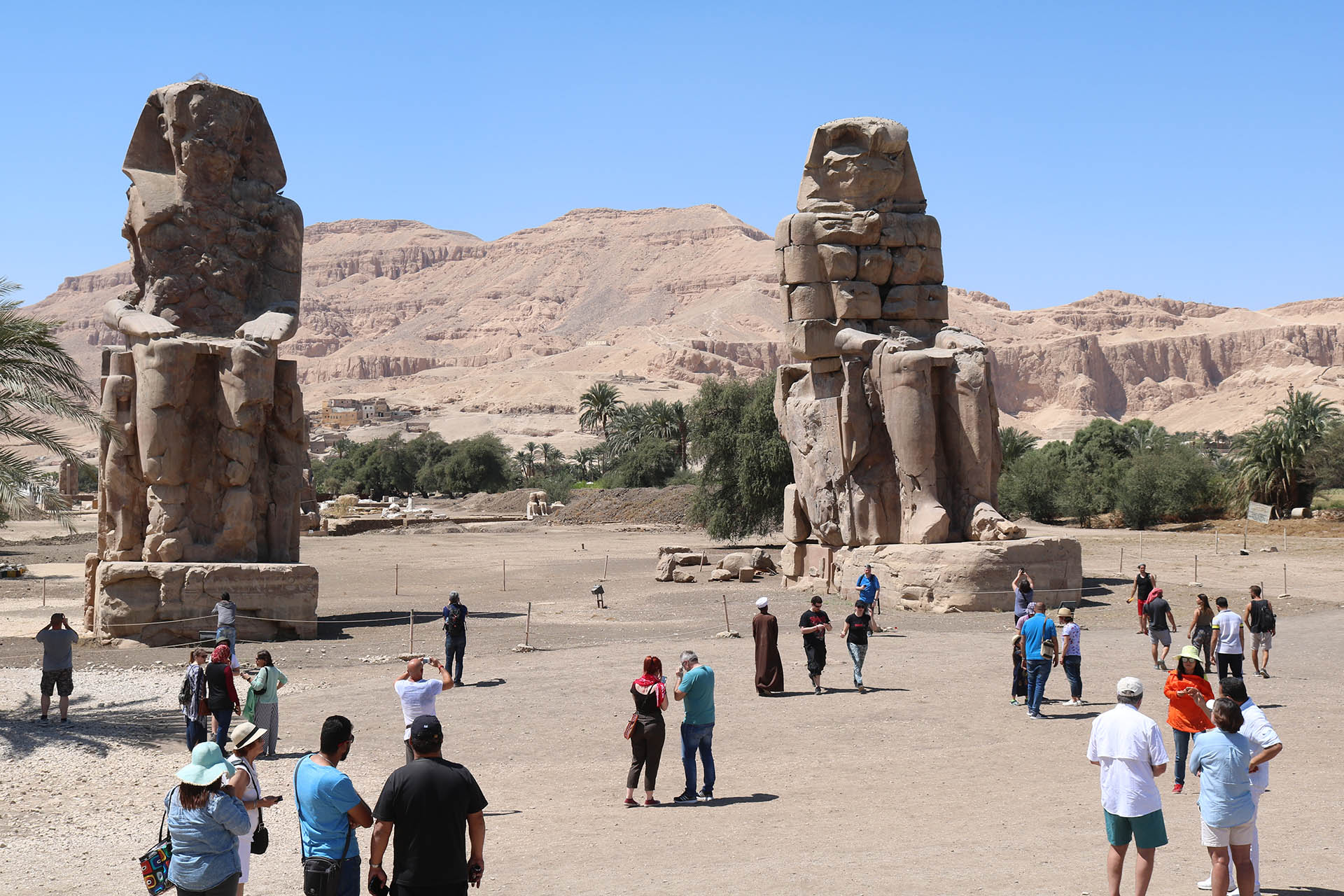
The Colossi of Memnon: Sentinels of Ancient Egypt’s Grandeur
The Origins and History of the Colossi
The Colossi of Memnon were originally constructed as part of the grand mortuary temple complex commissioned by Pharaoh Amenhotep III, one of the most influential rulers of the 18th Dynasty. This ambitious ruler, who reigned from approximately 1390 to 1352 BCE, sought to leave an indelible mark on the ancient Egyptian landscape with his grandiose building projects, and the Colossi were among his most remarkable achievements.
Amenhotep III’s Legacy and the Mortuary Temple
During his reign, Amenhotep III oversaw a period of prosperity, stability, and artistic flourishing in ancient Egypt. His ambitious vision for a grand mortuary temple complex was a testament to his wealth, power, and desire to be remembered as a great pharaoh. The temple, once a magnificent structure adorned with intricate reliefs and statuary, was designed to serve as a place of worship and commemoration after the pharaoh’s death.
It was within this grand complex that the Colossi of Memnon were erected, standing as monumental guardians at the entrance to the temple, welcoming visitors and paying homage to the greatness of Amenhotep III.
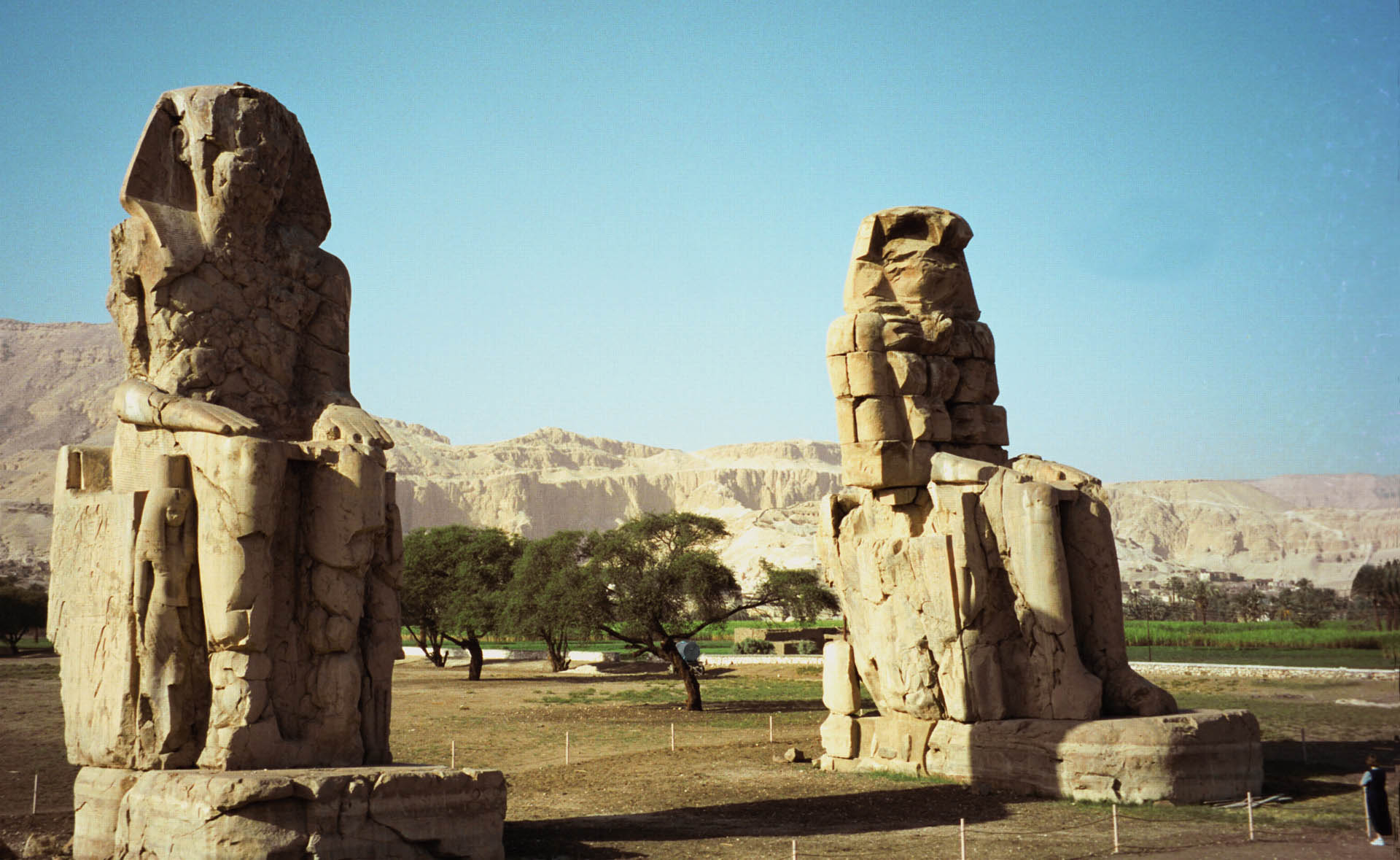
The Colossi of Memnon: Sentinels of Ancient Egypt’s Grandeur
The Colossal Statues: Masterpieces of Ancient Craftsmanship
The Colossi of Memnon are true marvels of ancient Egyptian sculpture and craftsmanship. Each statue stands an impressive 18 meters (60 feet) tall and weighs an astonishing 720 tons, making them among the largest and most imposing ancient statues in the world.
Quartzite Monoliths and Intricate Carvings
These colossal figures were meticulously carved from quartzite, a hard and durable stone that was highly prized by ancient Egyptian artisans for its unique reddish-brown hue and resistance to weathering. The statues depict Amenhotep III seated on a throne, adorned with the traditional regalia of a pharaoh, including the distinctive double crown of Upper and Lower Egypt.
The intricate carvings and attention to detail on these statues are truly remarkable. The facial features, intricate headdresses, and ornate hieroglyphic inscriptions that adorn the throne and base are a testament to the skill and artistry of the ancient Egyptian sculptors who created these monumental works.
The Mysteries and Legends Surrounding the Colossi
Despite their grandeur and the wealth of historical knowledge surrounding their construction, the Colossi of Memnon have also been shrouded in mystery and legend. One of the most intriguing aspects of these statues is the phenomenon known as the “Singing Colossi.”
According to ancient Greek writers and travelers, including the renowned historian Strabo, one of the statues was known to emit a melodious sound at dawn, a phenomenon that was attributed to the statue “singing” to greet the rising sun. This mysterious occurrence has been the subject of much speculation and debate among scholars, with theories ranging from the expansion and contraction of the stone due to temperature changes to the presence of acoustic resonance chambers within the statues.
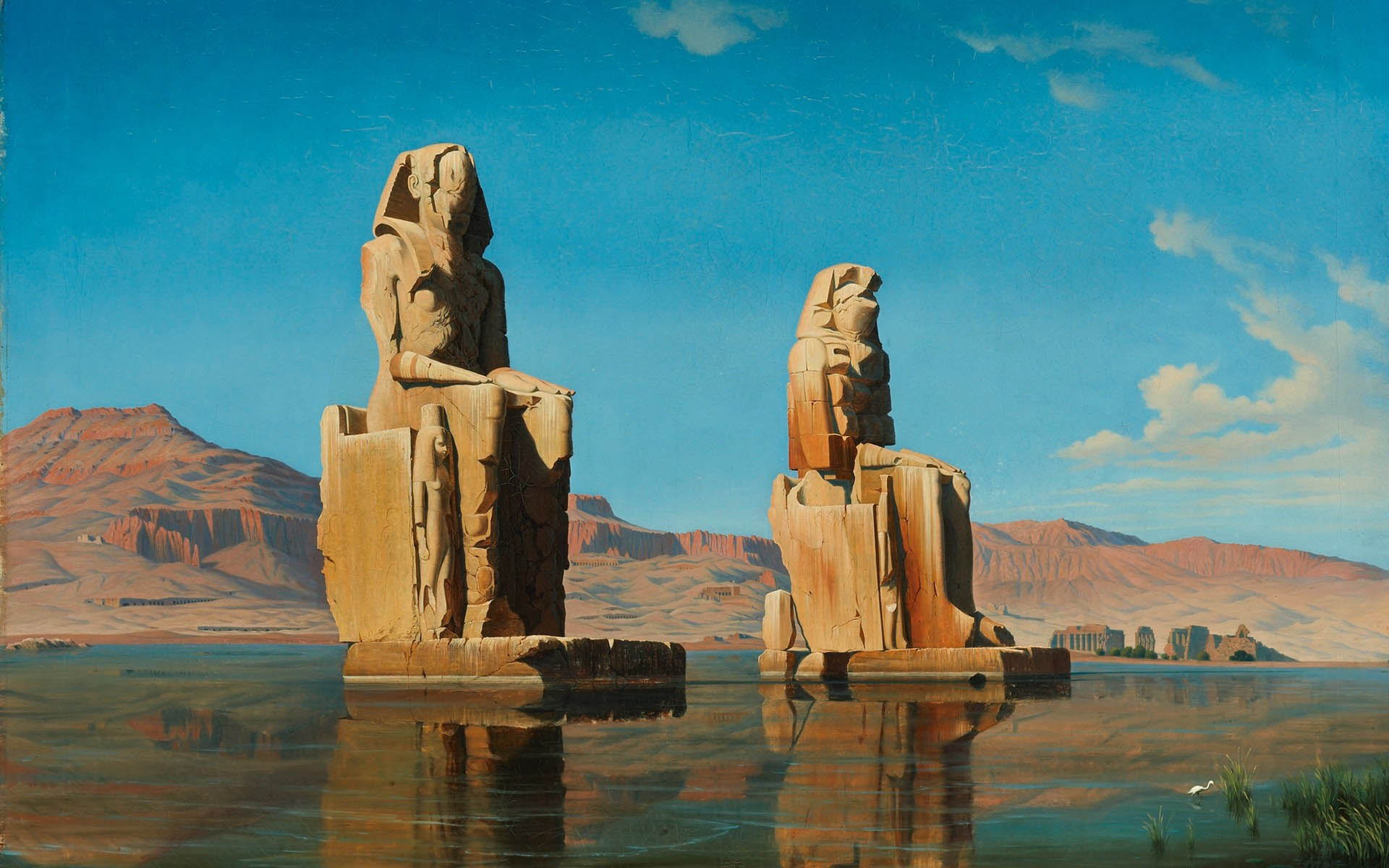
The Enduring Legacy and Preservation Efforts
Despite the ravages of time and the elements, the Colossi of Memnon have endured as iconic symbols of ancient Egypt’s architectural and artistic achievements. Their enduring presence has inspired awe and wonder in countless generations of visitors, serving as a powerful reminder of the grandeur and ingenuity of this ancient civilization.
Surviving Earthquakes and Natural Disasters
Over the centuries, the Colossi have faced numerous challenges, including earthquakes, natural disasters, and even human intervention. In 27 BCE, a powerful earthquake toppled the northern colossus, shattering it into numerous fragments. This event only added to the mystique of the statues, as the “singing” phenomenon was believed to have ceased after the collapse.
Despite these setbacks, the Colossi have persevered, undergoing various restoration and preservation efforts throughout history. In the late 20th century, a comprehensive conservation project was undertaken to stabilize and protect the remaining colossus, ensuring its survival for generations to come.
Preserving a Cultural Treasure for Future Generations
Today, the Colossi of Memnon are recognized as a UNESCO World Heritage Site, forming part of the Ancient Thebes with its Necropolis. This designation highlights the global significance of these monumental statues and the commitment to preserving them as a cultural treasure for future generations.
Ongoing efforts by Egyptian authorities, archaeologists, and international organizations involve regular monitoring, conservation measures, and the implementation of sustainable tourism practices to minimize the impact of visitors on these fragile ancient wonders.
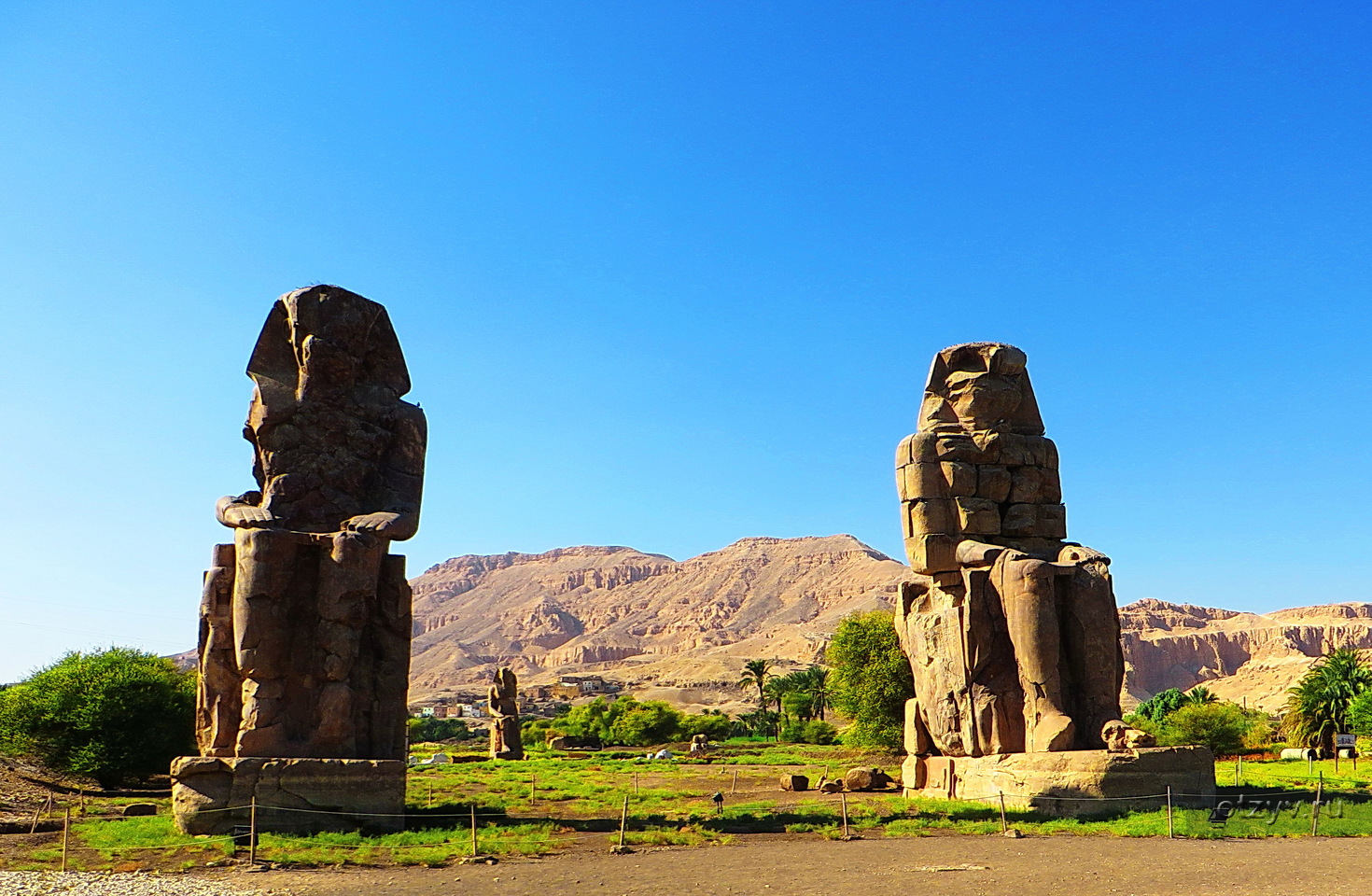
Experiencing the Colossi: A Journey Through Time
Visiting the Colossi of Memnon is a truly awe-inspiring experience, transporting visitors back in time to an era when ancient Egyptian civilization was at its zenith. As you approach these towering sentinels, their sheer scale and presence are overwhelming, inspiring a sense of reverence and wonder.
Guided Tours and Immersive Experiences
To fully appreciate the significance and history of the Colossi, visitors are encouraged to participate in guided tours led by knowledgeable Egyptologists and historians. These experts can provide valuable insights into the construction techniques, symbolism, and cultural context surrounding these remarkable statues, enriching the overall experience.
Furthermore, many tour operators and cultural institutions offer immersive experiences, such as virtual reality tours or multimedia presentations, that bring the ancient world to life, allowing visitors to visualize the Colossi in their original context as part of Amenhotep III’s grand mortuary temple complex.
Witnessing the Enduring Mysteries
For those who venture to the Colossi at dawn, there is the tantalizing possibility of witnessing the fabled “singing” phenomenon for themselves. While the exact causes of this acoustic marvel remain shrouded in mystery, the experience of being present at the site as the first rays of the sun illuminate these ancient sentinels is truly unforgettable.
As you stand in the shadow of the Colossi of Memnon,
you can’t help but be humbled by the enduring legacy of ancient Egyptian civilization and the remarkable achievements of its architects, artists, and builders. These towering statues serve as a powerful reminder of humanity’s innate drive to create, to leave an indelible mark on the world, and to push the boundaries of what is possible. Whether you are a history enthusiast, an art lover, or simply someone in awe of human ingenuity, the Colossi of Memnon are a must-visit destination that will leave you forever changed by their grandeur and enduring mystique.









